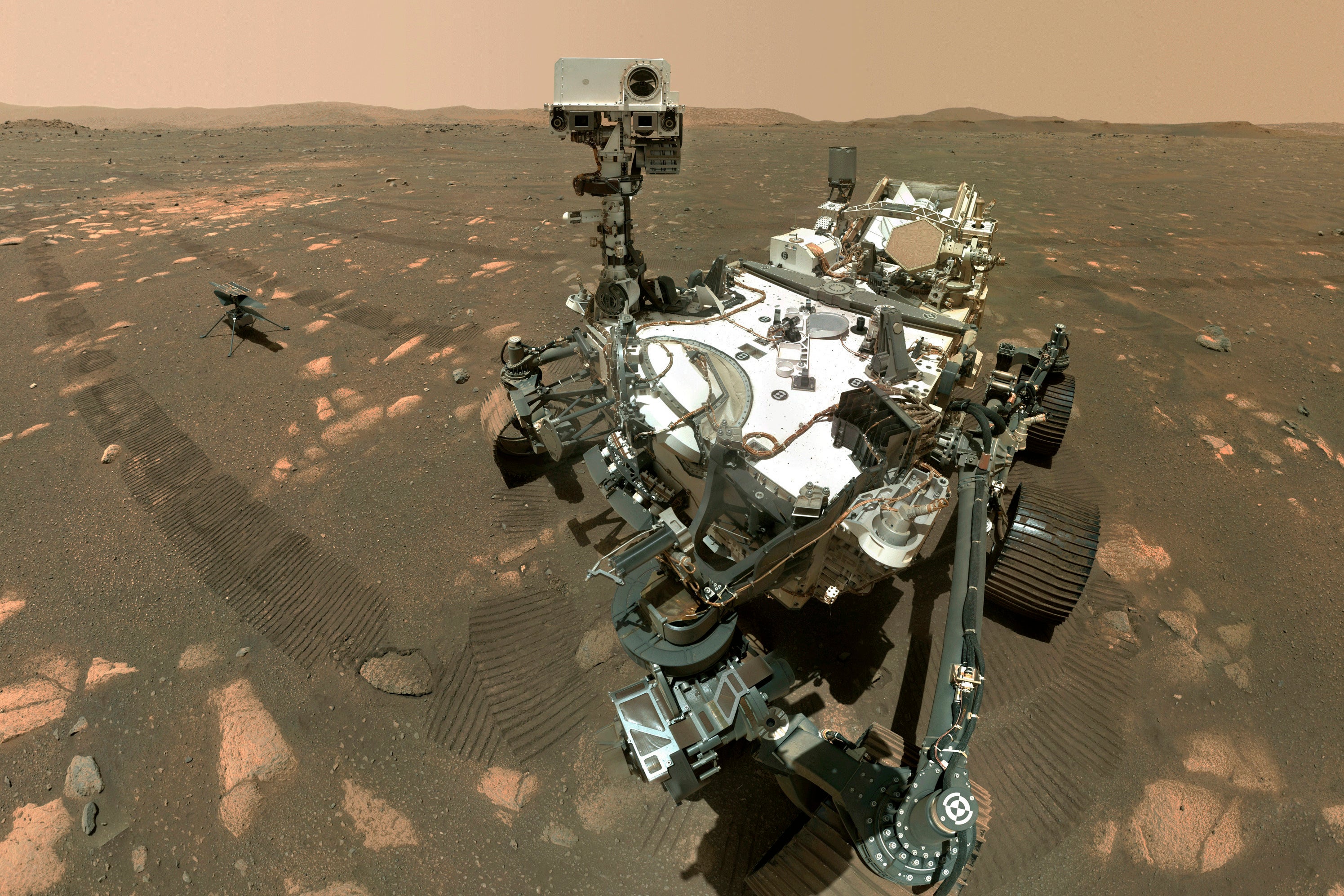Mars rover comes up empty in 1st try at getting rock sample
NASA’s newest Mars rover has come up empty in its first attempt to pick up a rock sample to eventually be brought back to Earth

Your support helps us to tell the story
From reproductive rights to climate change to Big Tech, The Independent is on the ground when the story is developing. Whether it's investigating the financials of Elon Musk's pro-Trump PAC or producing our latest documentary, 'The A Word', which shines a light on the American women fighting for reproductive rights, we know how important it is to parse out the facts from the messaging.
At such a critical moment in US history, we need reporters on the ground. Your donation allows us to keep sending journalists to speak to both sides of the story.
The Independent is trusted by Americans across the entire political spectrum. And unlike many other quality news outlets, we choose not to lock Americans out of our reporting and analysis with paywalls. We believe quality journalism should be available to everyone, paid for by those who can afford it.
Your support makes all the difference.NASA’s newest Mars rover came up empty Friday in its first attempt to pick up a rock sample to eventually be brought back to Earth
The rover Perseverance drilled into the floor of the planet’s Jezero Crater to extract a finger-sized sample from slabs of flat rocks. The drill seemed to work as intended, but it appeared no rock made it into the sample tube, the agency said Friday.
Engineers were working to figure out what happened.
“While this is not the ‘hole-in-one’ we hoped for, there is always risk with breaking new ground,” said NASA’s science mission chief Thomas Zurbuchen.
The next step will be using a camera mounted on a robotic arm to inspect inside the hole “and see what's down there," said NASA project scientist Ken Farley. He said they might see the broken rock core, or might discover the sample had turned to sand. “The rock properties might be different than we expected,” he said.
“It's a bit deflating because this whole complicated piece of machinery worked fine, the engineering worked just fine, but it seems Mars didn't cooperate," Farley said, adding that he didn't see the glitch as a long-term problem. “We will persevere."
NASA aims to collect up to 31 samples in tubes and stash them for pickup in about a decade. Plans call for the samples to be brought to Earth in the early 2030s in another mission with the European Space Agency
___
The Associated Press Health and Science Department receives support from the Howard Hughes Medical Institute’s Department of Science Education. The AP is solely responsible for all content.